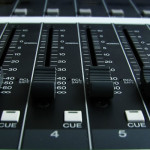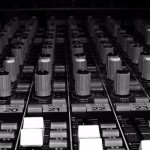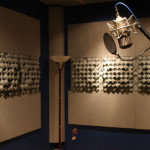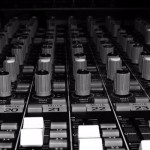Language
Recording Tips: What Is Headroom And Why So It's Important
If you are a musician, you must have surely heard the term " Headroom" a lot of times. However, there are still many people who struggle with Headroom while mixing their music. While mixing the music, it is very important to preserve a sufficient amount of headroom so that you rectify errors if any.
 Top Home Recording Mistakes To Avoid[/caption]
[caption id="attachment_8358" align="alignleft" width="150"]
Top Home Recording Mistakes To Avoid[/caption]
[caption id="attachment_8358" align="alignleft" width="150"] Recording Tips: Double Tracking Guitar[/caption]
[caption id="attachment_8359" align="alignleft" width="150"]
Recording Tips: Double Tracking Guitar[/caption]
[caption id="attachment_8359" align="alignleft" width="150"] Five Quick Tips for Better Vocal Recordings[/caption]
Five Quick Tips for Better Vocal Recordings[/caption]
What Is Headroom Anyway?
In simple terms, Headroom basically refers to the space between the transient peaks of the song and 0 dbFS. When it comes to digital music, 0dB is the maximum a sound can go without distortion. You shouldn't cross the 0dB limit. If you do, it will be considered as "clipping". And "clipping" is something which you should definitely avoid. It is very bad for your music. That is why you will find that almost every volume meter will turn red once you cross the 0dB limit. When you are creating a song which you are planning to master in the future, then you shouldn't reach the odB limit. Mastering a song is a very complex process and it includes changing most of the dynamics of the song. Hence, before mastering, if the song is already at 0dB, then there will be nothing to play with. The mastering engineer won't be able to do anything. You should leave something for him or her to play with, Most engineers generally prefer a headroom of around 6dB. Hence, you should make sure that your mix doesn't increase the 6dB level. Now, if you have already prepared a song mix without leaving any headroom, then nothing can be done about it. Your only option will be to just turn down the master fader. In order to make sure that such a situation doesn't happen in the future, here are some things which you should consider while mixing: 1. Focus on the main element of your song: When you are preparing a song mix, there must be definitely one element of the track which is the most important. Hence, mix the most important elements of your song first. Then, gradually shift to the less intense elements of the song. 2. No cheating: Make sure to keep a track on headroom right from the start of creating the song. Don't leave it for the last minute. And in case you find yourself in such a situation, then try to fine tune all the individual track levels. Pulling the master fader down should be the absolute last retort. Because by pulling the master fader down, you are actually squishing the mix. Although you will get sufficient headroom, the audio quality won't be good. 3. 24 Bit: This is the most important tip for all musicians. If you want to have headroom at the end, then it is very important to record at 24 bit. Most people do it, but there are still some people who prefer 24 bit. 4. Louder is not always better: Many people think that loud music sound better but that is not at all true. Mixing at a loud level is not recommended. You should always try to record at a level where you can actually converse with someone without having to shout.Final Thoughts ...
Hopefully, the tips above have not only helped you wrap your head around headroom and why it is so important, but given you some ideas on how to best utilize it while recording!Your Turn to Sound Off!
How many facts did you already know from the five listed above?Let us know in the comment section below!
Other Stories You Might Like ...
[caption id="attachment_8356" align="alignleft" width="150"] Top Home Recording Mistakes To Avoid[/caption]
[caption id="attachment_8358" align="alignleft" width="150"]
Top Home Recording Mistakes To Avoid[/caption]
[caption id="attachment_8358" align="alignleft" width="150"] Recording Tips: Double Tracking Guitar[/caption]
[caption id="attachment_8359" align="alignleft" width="150"]
Recording Tips: Double Tracking Guitar[/caption]
[caption id="attachment_8359" align="alignleft" width="150"] Five Quick Tips for Better Vocal Recordings[/caption]
Five Quick Tips for Better Vocal Recordings[/caption]
